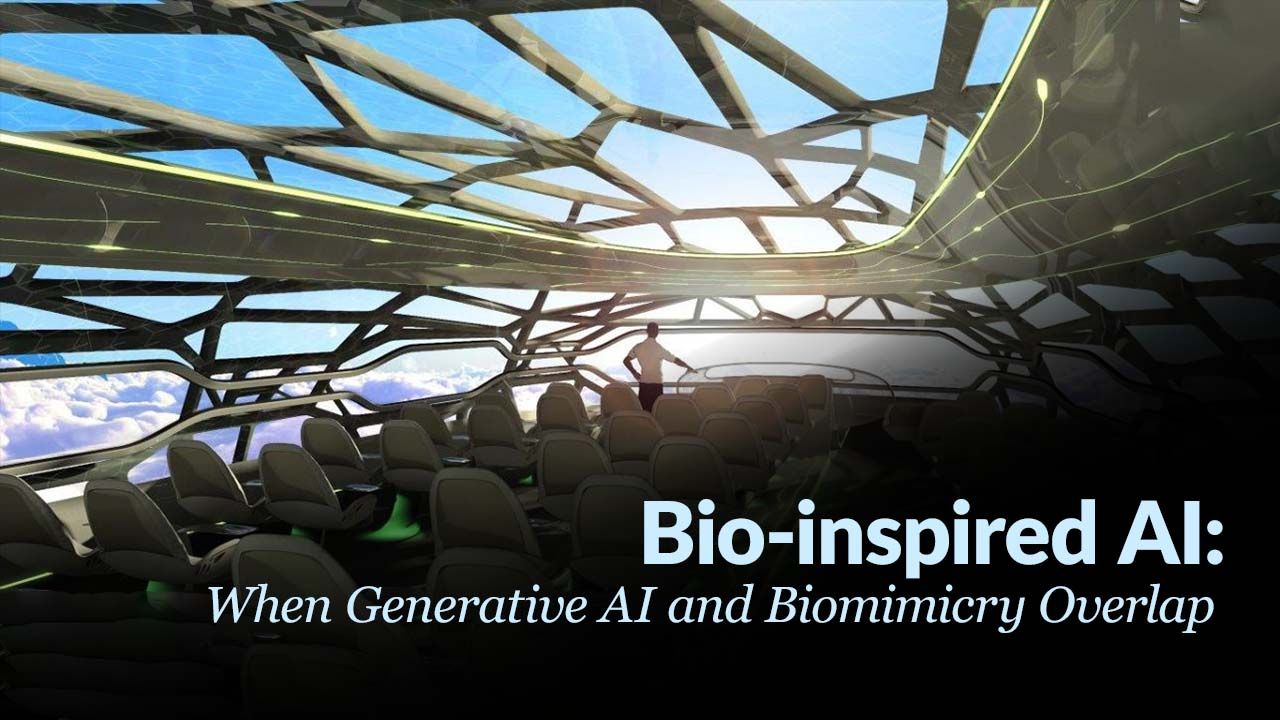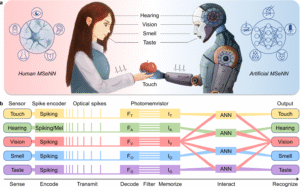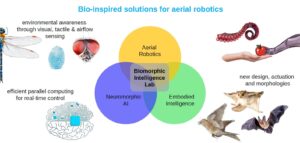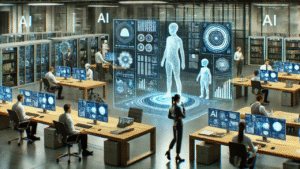Bio-Inspired Machine Learning: Learning from Nature to Build Smarter AI
Introduction
Nature has been evolving and solving problems for billions of years. From the efficiency of ant colonies to the adaptability of the human brain, biological systems offer powerful strategies for survival, optimization, and decision-making. Machine learning, on the other hand, is the modern tool humans use to replicate intelligent behavior through data-driven algorithms. When these two domains intersect, we get Bio-Inspired Machine Learning (Bio-ML)—an exciting field that seeks to mimic natural processes to build smarter, more adaptive, and more efficient artificial intelligence systems.
In this article, we’ll explore what bio-inspired ML is, how it works, examples of algorithms derived from nature, real-world applications, benefits, challenges, and the future of this fascinating field.
What is Bio-Inspired Machine Learning?
Bio-Inspired Machine Learning (Bio-ML) is an area of artificial intelligence that designs algorithms and models inspired by biological systems. Unlike traditional ML methods that rely heavily on mathematical optimization and statistical modeling, Bio-ML draws inspiration from processes such as:
-
Evolution (Darwin’s survival of the fittest principle)
-
Swarm intelligence (coordination in ants, bees, or birds)
-
Neural processes (how the brain learns and adapts)
-
Immune systems (self-defense and anomaly detection)
The core idea is simple: If nature has already solved a problem efficiently, why not imitate it in AI?
Why Bio-Inspiration Matters in Machine Learning
Biological systems have some inherent properties that are highly desirable in machine learning models:
-
Adaptability – Organisms evolve and adapt to changing environments; AI systems need the same flexibility.
-
Self-organization – Swarms, immune systems, and neural networks can organize themselves without central control.
-
Robustness – Biological systems are fault-tolerant and resilient to noise or disruptions.
-
Scalability – Nature scales efficiently, from single-cell organisms to massive ecosystems.
-
Energy efficiency – The human brain consumes far less energy compared to current AI supercomputers.
By mimicking these traits, bio-inspired ML can help build smarter, scalable, and sustainable AI systems.
Key Bio-Inspired ML Techniques and Algorithms
Several well-known algorithms and learning strategies have been developed by imitating biological processes. Let’s look at the most important ones.
1. Artificial Neural Networks (ANNs) – Inspired by the Brain
-
Mimic the structure of neurons and synapses.
-
Widely used in deep learning, image recognition, NLP, and reinforcement learning.
-
Example: Convolutional Neural Networks (CNNs) imitate the visual cortex to process images.
2. Genetic Algorithms (GA) – Inspired by Evolution
-
Based on Darwin’s principle of natural selection.
-
Uses mutation, crossover, and selection to evolve better solutions over time.
-
Applied in optimization problems like scheduling, portfolio optimization, and design.
3. Evolutionary Strategies (ES) and Genetic Programming (GP)
-
Variants of genetic algorithms that evolve not just solutions but also the structure of algorithms themselves.
-
GP is used to automatically generate computer programs.
4. Swarm Intelligence Algorithms – Inspired by Collective Behavior
-
Ant Colony Optimization (ACO): Mimics how ants find the shortest paths by laying pheromones.
-
Particle Swarm Optimization (PSO): Inspired by flocking birds or fish schools, where individuals adjust based on neighbors.
-
Applications: logistics, routing, clustering, robotics.
5. Artificial Immune Systems (AIS) – Inspired by the Human Immune Response
-
Detects intruders (like viruses or anomalies) using pattern recognition.
-
Used in cybersecurity, fraud detection, and fault diagnosis.
6. Neuroevolution
-
Combines neural networks with evolutionary algorithms to evolve network architectures automatically.
-
Used in reinforcement learning and autonomous agents.
7. Cellular Automata
-
Inspired by self-replicating cells and local interaction rules.
-
Used in simulation of complex systems like weather, disease spread, and cryptography.
Real-World Applications of Bio-Inspired ML
The influence of bio-inspired algorithms extends across industries:
1. Healthcare and Medicine
-
Disease prediction using neural networks.
-
Drug discovery through genetic algorithms.
-
Anomaly detection in medical imaging inspired by immune systems.
2. Cybersecurity
-
Artificial immune systems for intrusion detection.
-
Genetic programming for malware evolution and counter-defense.
3. Transportation and Logistics
-
Ant Colony Optimization for route planning in supply chains.
-
Swarm-based robotics for warehouse automation.
4. Finance
-
Genetic algorithms for portfolio optimization.
-
Neural networks for fraud detection and algorithmic trading.
5. Robotics
-
Swarm robotics for exploration and search-and-rescue.
-
Neuroevolution for teaching robots adaptive behaviors.
6. Energy and Sustainability
-
Smart grid optimization using PSO.
-
Evolutionary models for renewable energy distribution.
7. Artificial Creativity
-
Genetic programming for art and music generation.
-
Neural models inspired by the brain for generative AI.
Benefits of Bio-Inspired ML
-
Robustness: Works well in noisy, unpredictable environments.
-
Flexibility: Adapts to new and changing data.
-
Scalability: Handles large and complex problems effectively.
-
Exploration of Search Space: Better at finding global optima in optimization problems.
-
Interdisciplinary Impact: Brings insights from biology, ecology, and neuroscience into AI.
Challenges in Bio-Inspired Machine Learning
Despite its potential, Bio-ML faces significant hurdles:
-
Computational Cost – Evolutionary methods can be resource-intensive.
-
Complexity of Biological Systems – Hard to replicate exact biological mechanisms.
-
Scalability Issues – Some swarm or immune algorithms don’t scale efficiently in massive datasets.
-
Lack of Theoretical Guarantees – Unlike traditional ML, bio-inspired methods may lack rigorous convergence proofs.
-
Interpretability – Neural and evolutionary models can be “black boxes.”
The Future of Bio-Inspired Machine Learning
The field is growing rapidly, with exciting directions ahead:
-
Neuromorphic Computing – Hardware mimicking the brain for energy-efficient AI.
-
Hybrid Models – Combining statistical ML with bio-inspired techniques for the best of both worlds.
-
Bio-Inspired Reinforcement Learning – Leveraging natural reward systems for self-learning agents.
-
Cross-Disciplinary Research – Closer collaboration between biologists, neuroscientists, and AI researchers.
-
Ethical and Sustainable AI – Drawing from nature’s efficiency to create eco-friendly AI.
Ultimately, bio-inspired ML may lead to Artificial General Intelligence (AGI) by mimicking not just specific tasks but also the adaptability and resilience of living beings.
Conclusion
Bio-Inspired Machine Learning (Bio-ML) represents a fascinating convergence of biology and artificial intelligence. By imitating the strategies nature has refined over millions of years, AI systems can become more adaptive, robust, and intelligent. From neural networks inspired by the brain to ant colony optimization for logistics, the applications are vast and impactful.
The road ahead is full of opportunities and challenges. While computational limitations and theoretical gaps exist, the promise of creating AI that is as efficient and resilient as biological systems keeps researchers pushing forward. As technology advances, bio-inspired ML may well become the foundation of the next generation of AI—bridging the wisdom of nature with the power of machines.
https://bitsofall.com/https-www-yourwebsite-com-large-language-models-llms-engines-behind-modern-ai/
Robotics and Computer Vision: The Future of Intelligent Machines
The Discovery of New Ebola Drug Targets Using ML-Powered Imaging






